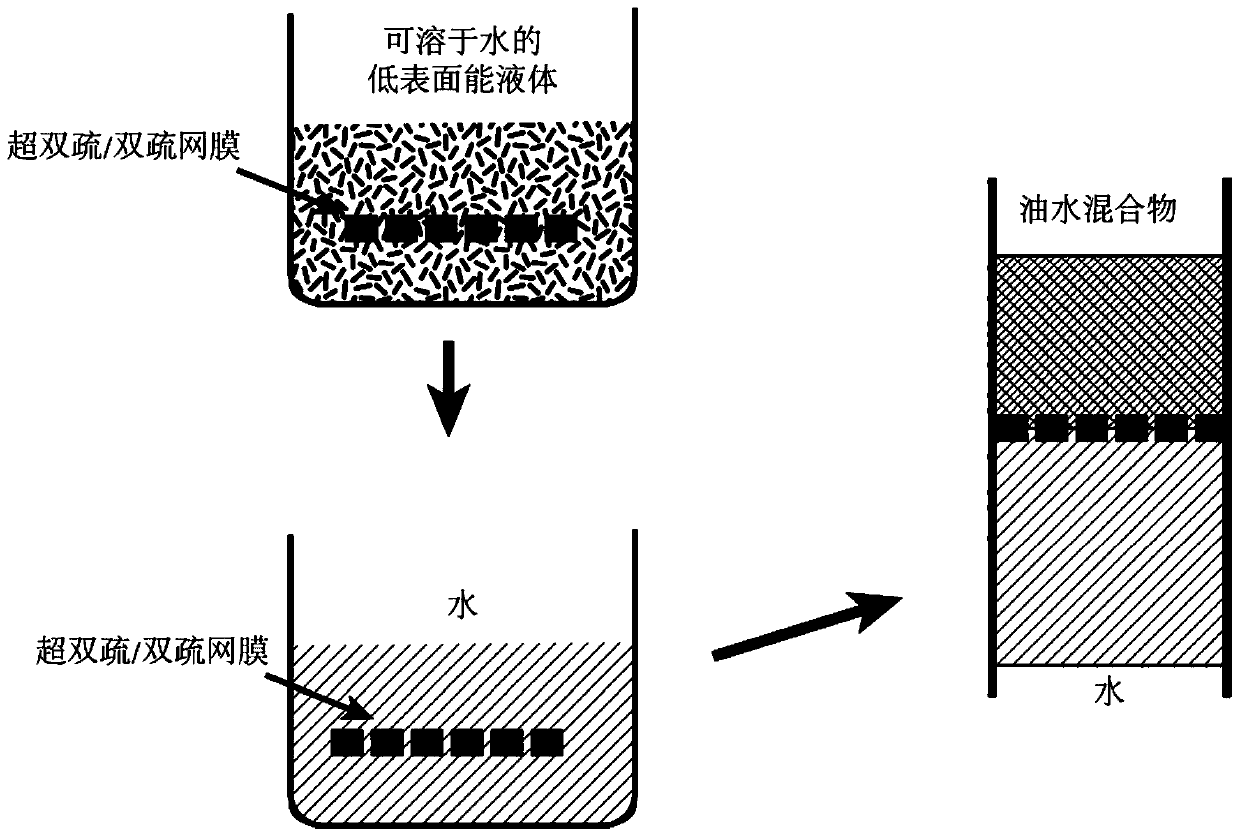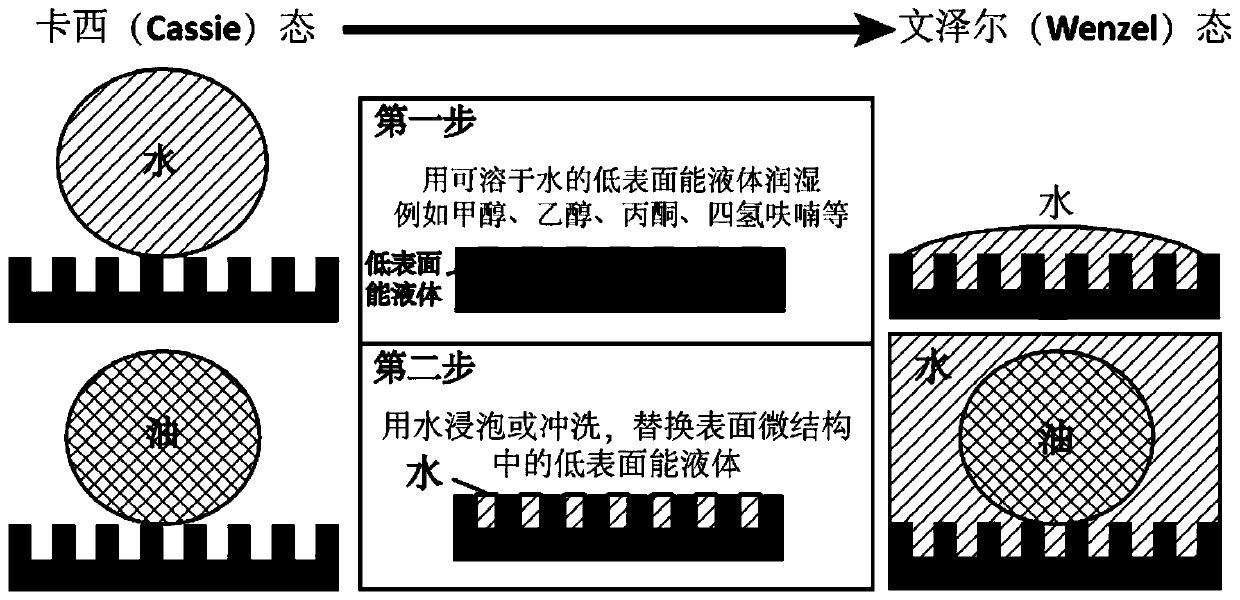Method for realizing water-passing and oil-blocking oil-water separation by using superamphiphobic or amphiphobic omentum
A technology for oil-water separation and dredging membrane, applied in separation methods, liquid separation, chemical instruments and methods, etc., can solve problems such as difficult preparation, blocking of mesh holes by filtration method, and difficulty in realizing oil-water-passing oil-water separation. Achieve the effects of low cost and energy consumption, improved separation efficiency, and greatly reduced efficiency
- Summary
- Abstract
- Description
- Claims
- Application Information
AI Technical Summary
Problems solved by technology
Method used
Image
Examples
specific Embodiment approach 1
[0021] Specific implementation mode 1: The specific process of the method for realizing oil-blocking and water-flowing oil-water separation using super-amphiphobic or amphiphobic omentum in this embodiment is as follows:
[0022] Step 1: making a water-soluble liquid with low surface energy wet a part or the whole of the superamphiphobic or amphiphobic omentum by means of spraying or soaking;
[0023] Super-amphiphobic means that the contact angles of oil and water with solid surfaces are greater than 155 degrees;
[0024] Amphiphobic means that the contact angles of oil and water with solid surfaces are both greater than 90 degrees and less than or equal to 155 degrees;
[0025] The specific amount of low surface energy is actually related to the oleophobicity of the super-amphiphobic or amphobic surface, which is low enough to wet the super-amphiphobic or amphobic surface. For example, it is generally used that the surface energy at room temperature is less than 0.03N / m as ...
specific Embodiment approach 2
[0030] Embodiment 2: This embodiment differs from Embodiment 1 in that the water-soluble liquid with low surface energy in step 1 is ethanol, methanol, acetone, tetrahydrofuran, or an aqueous solution containing a surfactant.
[0031] Other steps and parameters are the same as those in Embodiment 1.
specific Embodiment approach 3
[0032] Embodiment 3: The difference between this embodiment and Embodiment 1 or 2 is that in the step 1, the super-amphiphobic omentum behaves as super-hydrophobic and super-oleophobic in the air, so that neither oil nor water can pass through the network. membrane.
[0033] Other steps and parameters are the same as those in Embodiment 1 or Embodiment 2.
PUM
 Login to View More
Login to View More Abstract
Description
Claims
Application Information
 Login to View More
Login to View More - R&D
- Intellectual Property
- Life Sciences
- Materials
- Tech Scout
- Unparalleled Data Quality
- Higher Quality Content
- 60% Fewer Hallucinations
Browse by: Latest US Patents, China's latest patents, Technical Efficacy Thesaurus, Application Domain, Technology Topic, Popular Technical Reports.
© 2025 PatSnap. All rights reserved.Legal|Privacy policy|Modern Slavery Act Transparency Statement|Sitemap|About US| Contact US: help@patsnap.com


